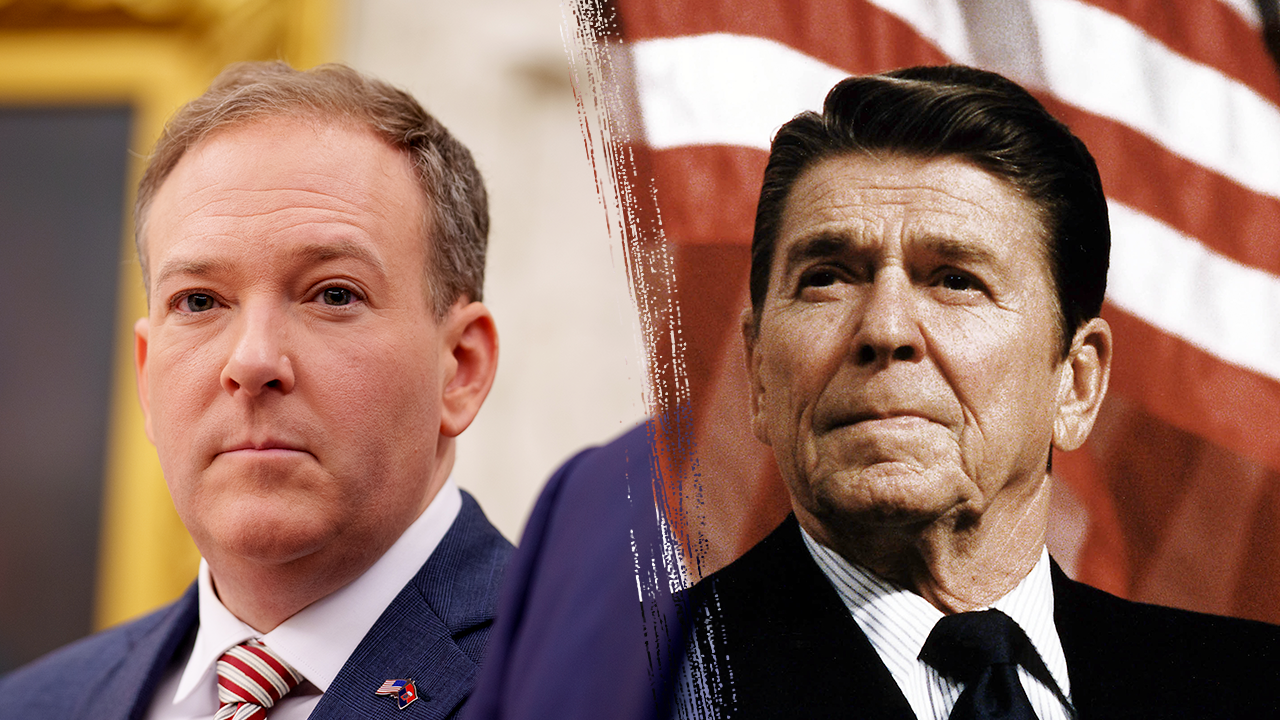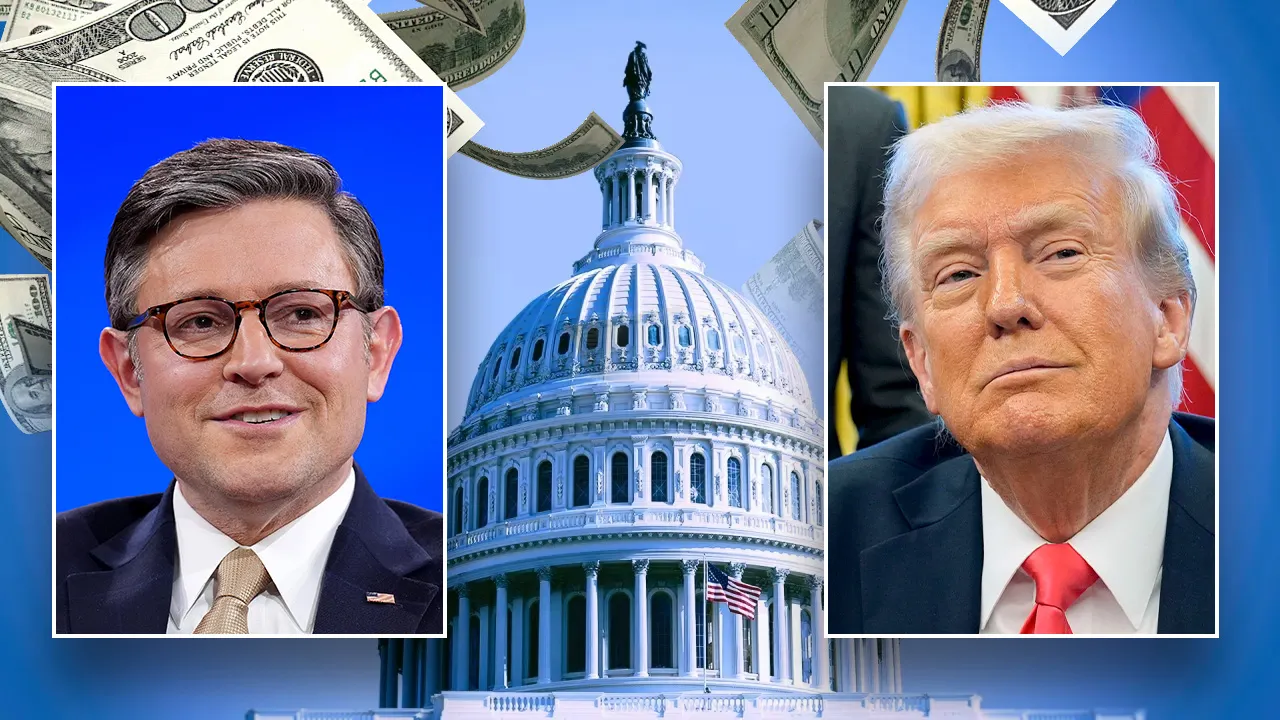Business
The Student Loan Borrowers Who Will Continue to Struggle

The Supreme Court has barred the Biden administration from carrying out its plan to extinguish up to $20,000 in federal student loan debt, and millions of borrowers will continue to struggle under the weight of their loans.
These are students who are lured by aggressive for-profit institutions, whose lofty promises of higher earnings never come to fruition. They are borrowers seeking advanced degrees that are often necessary for low-paying but essential jobs in social work, the classroom or the courtroom.
These are the women who take a break from the work force to care for family and can’t find their way back to the salaries they had before.
Here are brief sketches of people in other circumstances like these, who have struggled and whose challenges are likely to continue.
No Degree, but All of the Debt
Gina McDavitt, 36, is one of the millions of borrowers with student debt but no degree, a group that is more likely to slip into default.
She tried to put herself through college in her early 20s while working as a bra fitter at Macy’s and took the most practical path: She started at College of San Mateo, a community college, and had planned to transfer to San Francisco State University.
But the classes required to complete her associate degree weren’t always offered, which meant she had to wait until they were. In the meantime, the costs of attending rose — but her Pell grant and loan eligibility did not, and she soon had trouble making ends meet.
“I was effectively priced out,” said Ms. McDavitt, who left school with about $3,000 in loans, which ballooned after several deferments. “So I have, like, $8,500 worth of student loans that are for a degree that would be free now,” she added, referring to programs that make community college free for eligible students. “That paired with I live alone, I have been in the same role for a while and I am in the Bay Area and it is very expensive out here. I struggle.”
Ms. McDavitt, who lives in Vallejo, Calif., and works in customer relationship management for a transport company, said she had been passed over for several promotions because she lacked the requisite degree. She recently trained someone who was promoted ahead of her.
“As it stands now, the amount of money I make doesn’t cover my bills,” said Ms. McDavitt, whose loans fell into default just before the pandemic took hold. “I am a single person making less than $55,000 a year with no degree. The weight of the world is on my shoulders.”
Ms. McDavitt is eager to start school again but unable to afford it.
When Monica Schmidt, 44, gave birth to her son in 2008, she was finishing a big term paper in her hospital room. Five months later, she received her B.S. in nursing from the University of Phoenix.
She next pursued a master’s degree, which would elevate her to nurse practitioner and provide her with the option of teaching. Her husband, a sales manager at a food company, worked during the day while she cared for their children, who were 1 and 4. At night, she worked full time as a supervisor at a skilled nursing facility while taking classes at Northern Illinois University.
“We couldn’t afford day care, so we worked opposite shifts,” said Ms. Schmidt, who lives in Genoa, Ill., and now works as a nurse in a therapeutic day school.
But after three years of starts and restarts, the juggle became more of a struggle with their young children, and in 2013 she stopped her coursework. The debt, however, was hers to keep. She now owes $64,000, more than half of which is for her graduate work.
Once her payments restart, she’ll pay roughly $450 a month for the next 25 years, or until her retirement. She has made 52 of the 120 qualifying payments for the Public Service Loan Forgiveness program, but she would be required to pay roughly $900 a month, an amount her family cannot afford, especially while saving for retirement and her two children’s college educations.
“I don’t want them to be in the same situation as me,” Ms. Schmidt said.
A Different Kind of Black Tax
Recent college graduates with student loan debt like Dorien Rogers, 23, face a constant buzz of questions in their heads: Make extra debt payments or start a savings plan? Can I afford to buy a home in the community I grew up in? (In his case, in Montgomery County, Md.) What about money to start a family someday?
As a Black man, Mr. Rogers is aware that Black people are more likely to have to borrow and that Black women often struggle the most with student loan debt.
Asha Anthony, 20, a rising senior at Howard University, will leave college with a B.A. in legal communication and about $30,000 in loans. But she’s already contemplating how she’ll finance her dream of becoming a civil rights lawyer, which typically requires an additional six figures in student debt.
She has already received help from her mother — who raised three daughters, with the help of her parents, while single and will have accumulated at least $30,000 in parental loans by the time Ms. Anthony graduates. Yet her mother is still paying down student debt of her own.
“I am determined to attend law school because it is a high priority for me, as it is for many young Black people, to be able to attend graduate schools and meet the goals I have set for myself,” said Ms. Anthony, who grew up in Mesa, Ariz. “It is discouraging when thinking about potential costs, because my family can only provide so much on top of what I am able.”
Mr. Rogers also has high aspirations. He took out additional loans last year and began an online master’s degree in public administration. At the same time, he was working as a substitute teacher and a DoorDash driver and serving as the president of Maryland’s youth and college division for the N.A.A.C.P. He wants to go into politics and sees education as a kind of national mandate, especially for people like him.
“Education is a tool to better our communities, and the institutions of higher learning have been pivotal to advance our nation,” he said.
With a political science bachelor’s degree from Salisbury University in Maryland, he can’t help but wonder: If legislators chose to assist the country’s banks during the 2008 financial crisis, why don’t they believe people like him are worthy of similar investments?
“If you’re able to forgive debt, you’re going to see reinvestment in the economy,” he said. “Homeownership. Building up credit. Starting more families.”
The Parent Trap
Federal PLUS loans for parents are a product tailor made for trouble, and there’s no sign of that changing anytime soon.
That’s because parents can borrow up to the cost of their child’s entire education, and it doesn’t matter how much they earn. Moreover, lots of schools with high costs but low resources send financial aid notices to students telling them to make up their own shortfalls with tens of thousands of dollars of these loans.
Now, imagine that you have three children, are separated from your spouse and are earning just $11.50 an hour after spending years raising them. That was the predicament that Joanna Leiserson found herself in when she was living in Spokane, Wash., in 2000 and her oldest child was about to start college.
PLUS loans were the only way to afford the schools that best fit her children’s needs. After years of being unable to afford the payments — she became an Episcopal priest in 2005 — and having the debt in forbearance, she’s finally in an income-driven repayment program and has consolidated her $157,000 in debt to allow her to enroll in the Public Service Loan Forgiveness program. Her debt will be eliminated if she works another nine years. Otherwise, it could easily be with her until she dies.
“It does weigh on me,” she said. “I’m not sure that it’s true, but it feels like society will pay for it if I don’t.”
But any taxpayer subsidy is established public policy, based on laws that both Democrats and Republicans signed off on over the years. And then there is the matter of any higher power that might have an opinion on the matter.
“I believe that God doesn’t weigh in on the specifics of our debts, but rather wants us as a community to consider the policies and the underlying principles and values of our nation and ask ourselves whether they align with God’s values,” Ms. Leiserson said. “Which is a community in which all persons can live sustainable lives of dignity and respect.”

Business
The Stock Market’s Boomerang Month Has Put Investors in a Bind

The stock market is now higher than before President Trump’s broad and steep tariffs sent share prices into a tailspin. The 10-year government bond yield is now largely in line with where it started the year. On Tuesday, a widely watched measure of inflation nudged lower.
Judging from a snapshot of today’s financial markets, it would be easy to conclude that very little had happened over the last four and a half months.
As the administration has dialed down its trade offensive, delaying the worst of the tariffs announced on April 2 and promoting a long list of trade deals in the works, stocks have risen and the unnerving volatility in the government bond market — which Mr. Trump noted when he first began pausing his tariffs — has subsided.
On Tuesday, the latest reading of the Consumer Price Index showed a slower pace of inflation in April than economists had predicted, despite widespread concerns that tariffs could have sped up price increases.
The S&P 500, which came close to hitting a bear market early last month, is now up slightly since the start of the year, after a 0.7 percent gain on Tuesday.
Still, investors remained cautious, and complain that the outlook remains uncertain, with little clarity on what the final level of tariffs will be.
That leaves them in a tricky position, with many saying they have little conviction as to where the economy is headed but they cannot afford to wait on the sidelines and miss out on the possibility that tariffs will be lowered further and stocks will rise.
In the meantime, investors are still trying to parse how the tariffs that remain in place — including 30 percent tariffs on many Chinese imports — are affecting consumer spending and corporate profits
John Kerschner, a portfolio manager at Janus Henderson, said signs of tariff-fueled inflation are not likely to show up in the economic data for months.
“The market will wait with bated breath for those readings to make a determination of where we actually stand on tariff induced rising prices. Thus, market uncertainty will likely remain elevated,” Mr. Kerschner said.
The Federal Reserve is also in a wait-and-see mode, unwilling to keep lowering interest rates before the inflationary effect of the new tariffs is known. That’s because lower interest rates stimulate the economy and could add a further tailwind to inflation.
Market bets on when the Fed will next lower interest rates have gradually been pushed further out. At the start of this year, investors were anticipating that the Fed would lower interest rates at its meeting last week. Now, investors expect the first rate cut of the year to arrive at the September meeting.
Ellen Zentner, chief economic strategist for Morgan Stanley Wealth Management said the lower than expected reading in the Consumer Price Index on Tuesday “doesn’t mean tariffs aren’t impacting the economy, it just means they aren’t showing up in the data yet.”
“Wait-and-see is still the name of the game, and until that changes, the Fed will remain on the sidelines,” she added.
The longer uncertainty prevails, the more it becomes its own economic force, separate from the tariffs. Uncertainty means businesses hold off on making investment decisions and consumers pull back from spending, slowing economic growth.
Beneath the surface, that concern is still evident in the markets.
The Russell 2000 index of smaller companies, which are more at risk from a downturn in the economy, has risen from its lows, but remains 14 percent lower than its peak in November. The S&P 500 is only 4 percent below its February high.
The lowest-rated corporate debt continues to show some signs of strain.
Then there is the dollar, which has sent the most pointed signal of concern about tariffs. The dollar index, which measures the currency against a basket of its peers, has fallen 6.9 percent so far this year.
That is the dollar’s biggest slide since the end of 2022, when the Fed pivoted from raising interest rates, which had strengthened the dollar, to holding them steady.
But even now, as tariffs have de-escalated, the dollar has regained ground.
“As far as markets are concerned, there’s now a belief that the worst of the trade war has passed, and that the trend is now towards de-escalation,” noted analysts at Deutsche Bank said in a recent research note. But they also warned, “The U.S. is not out of the woods yet.”
Business
Google settles lawsuit alleging bias against Black employees

Google agreed to pay $50 million to settle a lawsuit alleging the search engine giant was racially biased against Black employees.
The settlement, which was reached after mediation and certified by a U.S. District Court judge in Oakland on Friday, covers some 4,000 Google employees in California and New York.
The original lawsuit came after a state agency, now known as the California Civil Rights Department, in 2021 began investigating Google’s treatment of Black female workers.
In 2022, former Google worker April Curley filed a lawsuit in federal court in San Jose alleging that she and other Black workers experienced systemic discrimination.
Curley, who worked at Google for six years, had been hired to conduct outreach and design recruiting programs with historically Black colleges.
However, her experience at the company quickly soured, she said, alleging that she was stereotyped as an “angry” Black woman, that she and other Black women had not been allowed to present during important meetings and that she was wrongfully terminated in 2020 after challenging internal practices.
Black workers were hired to lower-level jobs, paid lower wages, subjected to hostile comments and denied promotions, Curley and other Black workers who joined the proposed class-action alleged in their lawsuit.
The complaint said managers disparaged Black employees for not being “Googley” enough, comments the plaintiffs said served as racist dog whistles.
Throughout the litigation, the Mountain View-based company has maintained that it did not violate any laws.
“We’ve reached an agreement that involves no admission of wrongdoing. We strongly disagree with the allegations that we treated anyone improperly and we remain committed to paying, hiring, and leveling all employees consistently,” Google spokesperson Courtenay Mencini said in a statement Tuesday.
In addition to the monetary payout, Google has agreed in the settlement to analyze pay and correct differences based on race for the next three years. The company has also committed to maintaining transparent salary ranges and methods for employees to report concerns about pay or other practices.
And through August 2026, the company will not require employees to enter into mandatory arbitration for employment-related disputes, according to the settlement agreement filed last week in federal court.
Business
Tariff Misery in Japan: Honda and Nissan Forecast Plunges in Profit

President Trump’s decision to negotiate a break for China on tariffs is galling for Japan, which is reeling from auto sector levies that the White House has shown no sign of willingness to lift.
Japan, a top U.S. ally in Asia, was eager to advance trade negotiations with Washington, even as Mr. Trump imposed tariffs on automobiles, and threatened an across-the-board 24 percent tariff on Japanese goods.
While Beijing and others assembled plans for retaliatory tariffs, Japan rushed to Washington for trade negotiations, armed instead with commitments to buy more American goods and boost investments in the United States to $1 trillion.
Now in Tokyo, the sting is palpable.
On Tuesday — one day after the Trump administration agreed to temporarily nix most of its tariffs on China — two of Japan’s top automakers issued dire profit forecasts, weighed down by the effects of U.S. car tariffs.
Honda Motor said that its operating profit would fall nearly 60 percent for the fiscal year that began in April. It attributed the downgrade to a whopping $4.4 billion hit from tariffs.
Nissan Motor suspended its profit forecast for the current year, and said that it would likely swing to an operating loss in the first quarter. The automaker, which was already restructuring its global operations before the U.S. tariffs, said it would slash an additional 11,000 jobs on top of the 9,000 cuts it announced in November.
In Japan there is a sense of disbelief and indignation among business leaders and government officials that the Trump administration backed down on China tariffs, while maintaining punishing levies on allies like Japan with significantly smaller trade imbalances.
The fact that the U.S. prioritized China over many other trade partners in reaching a tariff agreement showed that “at this stage, allies like Japan are at a disadvantage,” said Kazuhiro Maeshima, a professor of American politics and diplomacy at Sophia University in Tokyo. “This can only be seen as disregard,” he said.
Earlier this month, a 25 percent U.S. tariff on vehicle imports was extended to cover auto parts as well. Those two levies are particularly painful for Japan because automobiles and car parts are by far its biggest export to the United States.
Economists estimate that the higher auto tariffs alone could put a big dent in economic growth in Japan this year. Factoring in broader disruptions from U.S. tariff policy, officials have predicted that growth could be more than halved.
That is because the auto sector is the backbone of Japanese industry. Nissan has already planned to shift some manufacturing to the United States to skirt tariffs, and if such moves are replicated by others, it could spark a broader hollowing out of industrial production in Japan.
Japan’s biggest automaker, Toyota Motor, said last week that while it aimed to protect production and jobs in Japan, U.S. tariffs would likely cost it more than $1 billion in April and May alone.
Honda’s chief executive, Toshihiro Mibe, said on Tuesday that the company plans to expand manufacturing in the United States to try to recover some of the billions of dollars of tariff losses it forecast. That includes moving some domestic production of its hybrid Civic to a factory it operates in Indiana, he said.
Japan is also negotiating with the United States regarding the proposed 24 percent “reciprocal” tariff, which the Trump administration announced last month and then delayed until early July. The next round of trade talks is expected later this month, but progress has stalled.
Japan has said lower tariffs on cars are a necessary condition of any trade deal, a position that Prime Minister Shigeru Ishiba reiterated in parliament on Monday.
-

 Austin, TX4 days ago
Austin, TX4 days agoBest Austin Salads – 15 Food Places For Good Greens!
-

 Education1 week ago
Education1 week agoIn Alabama Commencement Speech, Trump Mixes In the Political
-

 Technology1 week ago
Technology1 week agoBe careful what you read about an Elden Ring movie
-

 Culture1 week ago
Culture1 week agoPulitzer Prizes 2025: A Guide to the Winning Books and Finalists
-

 World6 days ago
World6 days agoThe Take: Can India and Pakistan avoid a fourth war over Kashmir?
-

 Education1 week ago
Education1 week agoUniversity of Michigan President, Santa Ono, Set to Lead University of Florida
-

 Technology6 days ago
Technology6 days agoNetflix is removing Black Mirror: Bandersnatch
-

 Politics1 week ago
Politics1 week agoEPA chief Zeldin announces overhauls to bring agency back to Reagan-level staffing


















